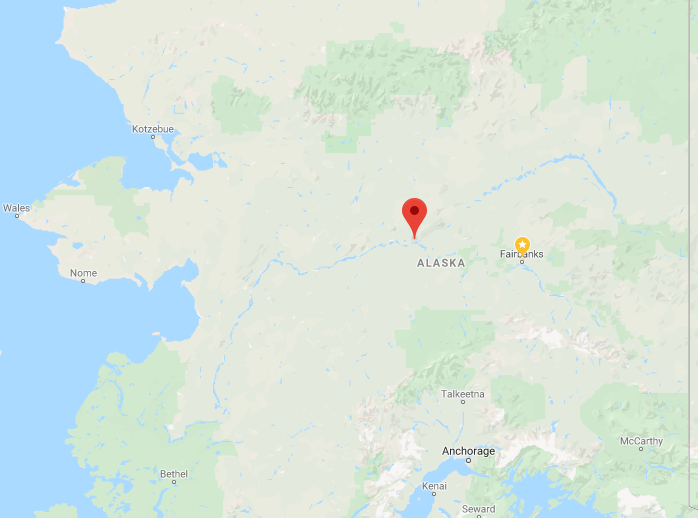Quick Facts
- Pronounced (TAN-uh-naw)
- Current Population 233 (2012 Alaska Department of Labor Estimate)
- Legislative Districts (link to State Legislature page):
- Senate District S
- House District 38
- Judicial District 4
- Latitude: 65.1719
- Longitude: -152.0789

Location
Tanana is located in Interior Alaska about two miles west of the junction of the Tanana and Yukon Rivers, 130 air miles west of Fairbanks.
Climate
Tanana experiences a cold, continental climate with temperature extremes. Daily maximum temperatures during July range from 64 to 70 °F; daily minimum temperatures during January are -14 to -48 °F. Extremes have been measured from -71 to 94 °F. Average annual precipitation is 13 inches, with 50 inches of snowfall. The river is ice-free from mid-May through mid-October.
History
Due to its location at the confluence of the Tanana and Yukon Rivers, Tanana was a traditional trading settlement for Koyukon and Tanana Athabascans long before European contact. In 1880, Harper’s Station, an Alaska Commercial Company trading post, was established 13 miles downriver from the present site. In 1881 Church of England missionaries from Canada built a mission 8 miles downriver.
Between 1887 and 1900, an elaborate school and hospital complex, the St. James Mission, was constructed. It became an important source of services and social change along both rivers. In 1898 Fort Gibbon was founded at Tanana to maintain the telegraph line between Fairbanks and Nome. A post office was also established, and several other trading posts developed around the turn of the century.
Gold seekers left the Yukon after 1906. Ft. Gibbon was abandoned in 1923. The St. James Hospital was transferred to BIA administration in the 1920s. During World War II, an air base was established near Tanana as a refueling stop for the lend-lease aircraft program.
New hospital facilities were built in 1949. During the 1950s, hospital administration was transferred to the U.S. Public Health Service. The City of Tanana was incorporated in 1961. The hospital complex was a major employer during this period, employing 54 persons with a payroll of $1.6 million, but it closed in 1982. That same year, Tanana incorporated as a first-class city in order to assume control of the local school system. The hospital facilities were remodeled for use as a health clinic, counseling center, tribal office, and regional elders’ residence.
Culture
Traditional Athabascan ways of life persist — subsistence, potlatches, dances, and foot races are part of the culture.
Community profile data provided by the State of Alaska Department of Commerce, Community and Economic Development.
